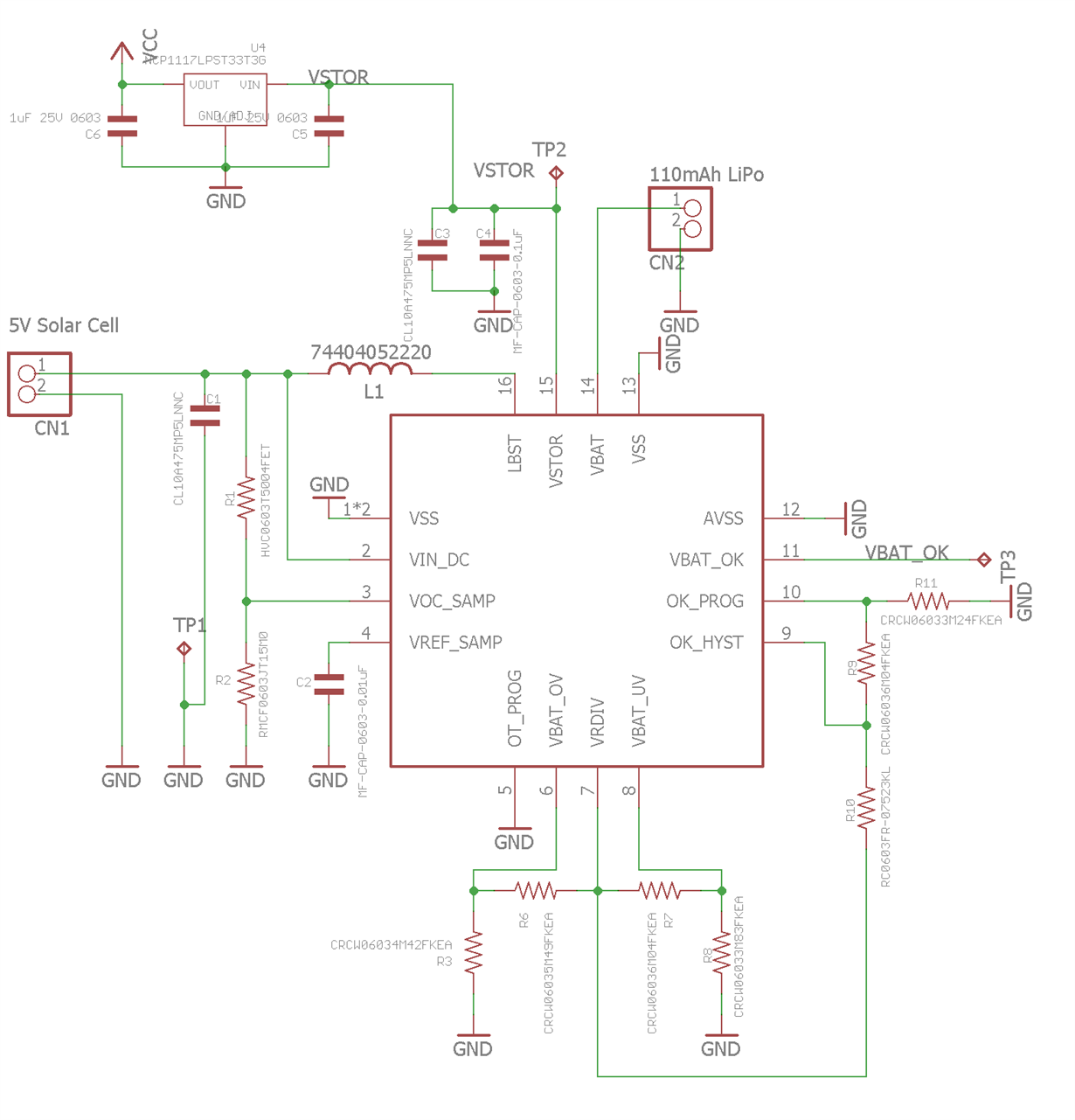Other Parts Discussed in Thread: BQ25570
Hello, I am debugging a circuit I designed around the BQ25504. It is a solar charging circuit which is meant to collect power during the day and store it in a 100mAh Li-ion battery connected to VBAT, then wake up at night to perform some sensor readings before shutting down for 24hrs. I am charging the battery fine, and during the day the entire system runs fine, but for some reason the circuit doesn't work at night or when the solar cell is removed, even if the battery is completely full. I am debugging the cause of this, and I wanted to doublecheck something on the datasheet:
Page 25, Section 10: Once the IC is out of cold start and the system load has been activated (e.g., using the VBAT_OK signal), the energy harvesting element must provide the main boost charger with at least enough power to meet the average system load.
Does this mean that if I use the BQ25504 to charge a battery during the day, the same chip will not be able to switch power from VBAT to VSTOR on its own once the solar cell is no longer receiving power?
Thanks for your time, hopefully someone will be able to bring me out of the dark :)
-Jarek


